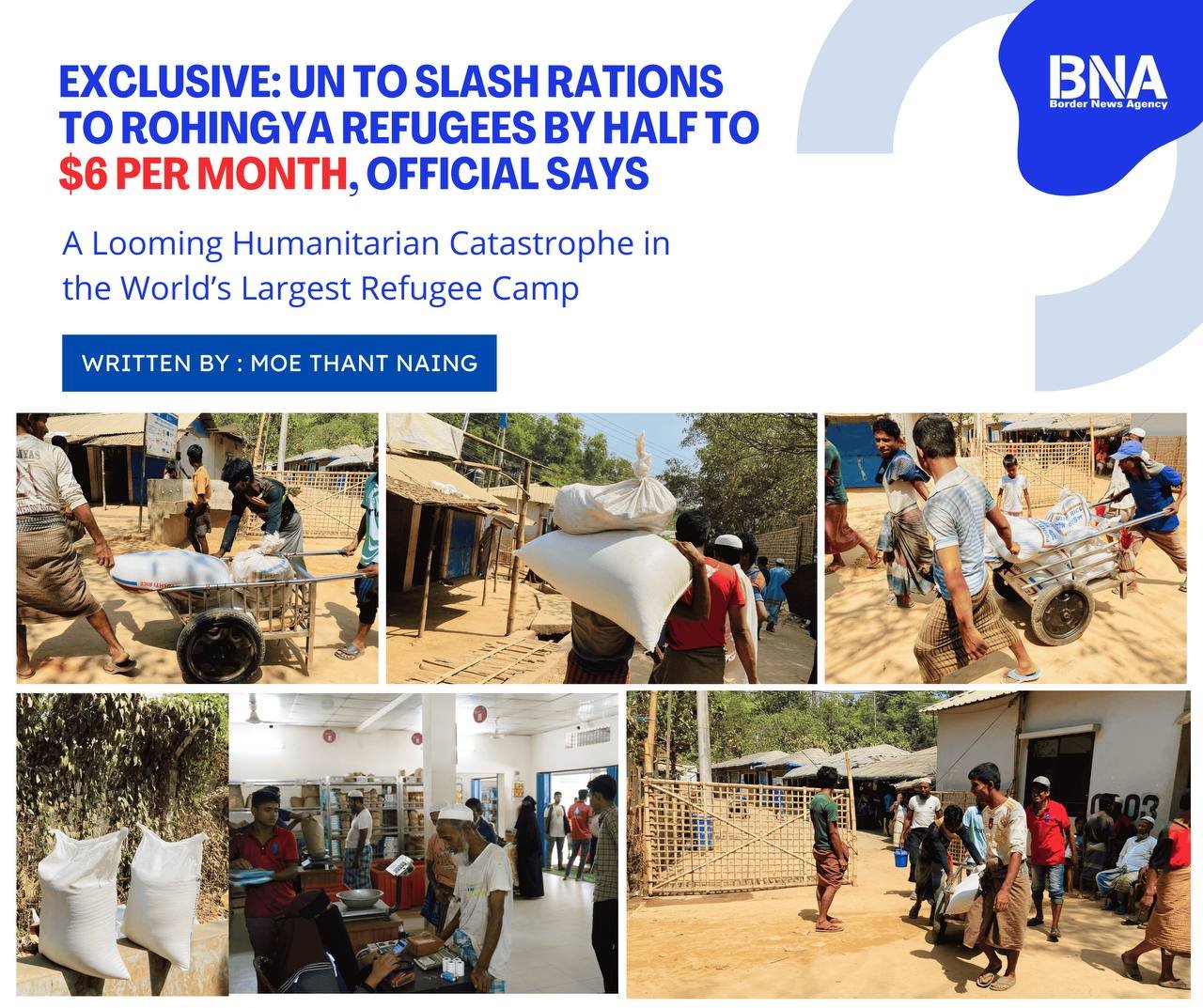A Looming Humanitarian Catastrophe in the World’s Largest Refugee Camp
Written by (Moe Thant Naing)
DHAKA, In a shocking and deeply concerning development, the United Nations World Food Programme (WFP) has confirmed plans to cut food rations for Rohingya refugees in Bangladesh from $12.50 to $6 per month, citing a severe funding crisis.
This drastic reduction, set to take effect from April 1, is expected to push thousands of already vulnerable refugees into deeper malnutrition, hunger, and insecurity, raising fears of an escalating humanitarian disaster.
Mohammed Mizanur Rahman, the Bangladesh government’s top official overseeing refugee affairs, confirmed receiving an official letter from the WFP outlining the cuts.
“What they are receiving now is already not enough, so it’s hard to imagine the consequences of this new cut,” he told Reuters over the phone.
This alarming decision comes at a time when Rohingya refugees who fled violence and persecution in Myanmar are already struggling to survive in overcrowded camps with limited access to food, clean water, healthcare, and education.
The reduction in food rations is expected to heighten tensions in the camps, increase malnutrition rates among children, and put even more pressure on an already strained humanitarian response.
With no immediate solution in sight and donor fatigue growing, the lives of over one million Rohingya refugees hang in the balance. This article takes a deep dive into the key aspects of this unfolding crisis, analyzing its causes, impact, and the broader implications of the WFP’s decision.
The Food Aid Crisis: A Drastic Cut in Rations
For years, the United Nations and humanitarian organizations have provided essential food assistance to Rohingya refugees in Bangladesh, with the WFP leading efforts to ensure their nutritional needs are met. However, as funding shortages continue to cripple aid operations, food assistance programs have come under severe strain.
The latest cut in rations will see Rohingya refugees receive only $6 per month an amount that experts say is well below the minimum required for survival. To put this in perspective, refugees will now have to survive on the equivalent of just 24 Bangladeshi taka per day an amount that can barely buy a banana or an egg in local markets.
The WFP had originally allocated $12.50 per month per refugee for food assistance, but due to a decline in international donations, this amount was cut to $8 in 2023.
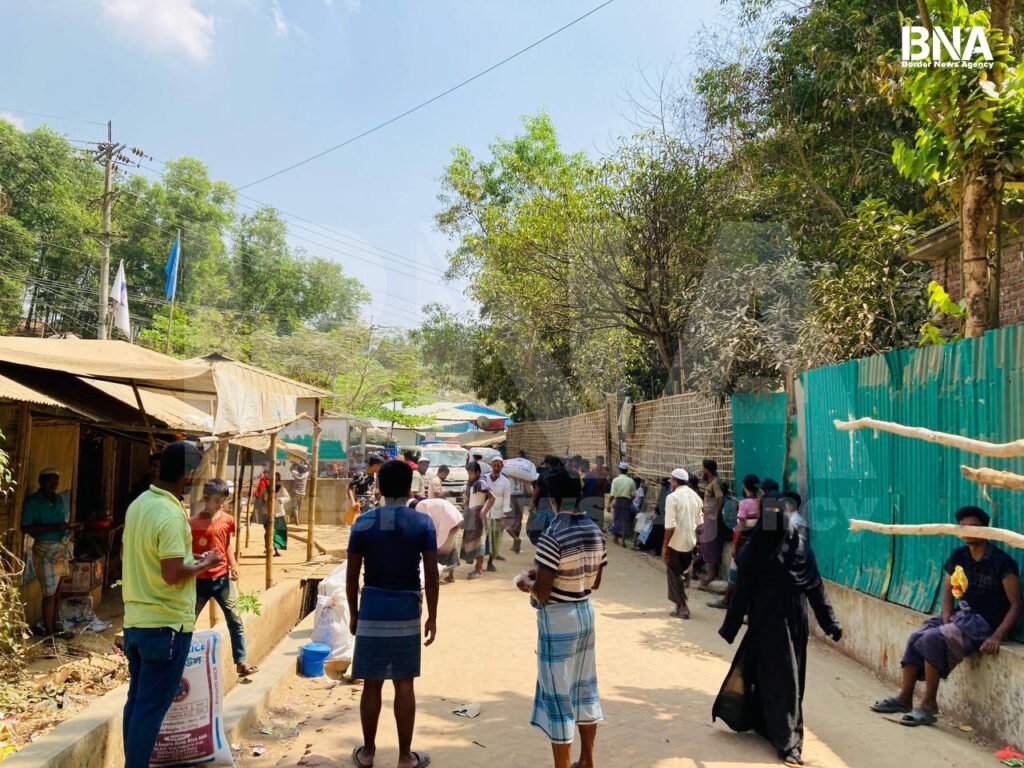
The consequences of that previous reduction were devastating leading to increased malnutrition, food insecurity, and a sharp rise in hunger-related illnesses. Now, with rations being further slashed to half of the original amount, experts warn that the situation is likely to spiral out of control.
Why Is This Happening? The Funding Shortfall and Global Aid Cuts
The WFP has acknowledged that it has been struggling to raise enough funds to sustain its Rohingya food assistance program. Despite appeals to multiple donors, efforts to secure additional funding have largely failed.
While the agency has not explicitly linked the cuts to recent U.S. policy changes, Bangladeshi officials believe that the Trump administration’s decision to reduce foreign aid globally has played a significant role in the funding crisis.
The U.S. has historically been the largest donor to the Rohingya humanitarian response, contributing more than 50% of the total funding in 2024, amounting to approximately $300 million.
However, with Washington abruptly halting most U.S. foreign aid and dismantling USAID programs, humanitarian operations worldwide have been thrown into turmoil. Countries like Sudan, South Africa, and Bangladesh where U.S. funded food and healthcare programs provide lifelines to millions—are facing severe disruptions.
Impact on the Rohingya Refugees: A Life Pushed to the Edge
For the Rohingya refugees, this latest cut is not just an economic setback it is a matter of survival.
Already living in extreme poverty, without legal status or job opportunities, the refugees are completely reliant on humanitarian aid to meet their basic needs.
A previous reduction in rations to $8 per month led to a 90% increase in food insecurity, with nearly all camp residents struggling to afford even one nutritious meal per day. Malnutrition rates among children skyrocketed, with over 15% of Rohingya children suffering from severe malnutrition—the highest rate ever recorded.
Now, with food assistance reduced to just $6 per month, the consequences are expected to be even more severe:
- Worsening Malnutrition: Refugees will be forced to further cut down on meals, increasing the risk of malnutrition, especially among children, pregnant women, and the elderly.
- Increased Disease and Mortality: Hunger and malnutrition weaken the immune system, making refugees more vulnerable to diseases such as diarrhea, respiratory infections, and tuberculosis.
- Growing Camp Tensions: Competition over scarce resources is expected to intensify, potentially leading to increased violence, crime, and instability in the camps.
- Rise in Child Labor and Exploitation: With food becoming even more scarce, families may be forced to send their children to work or engage in desperate survival tactics.
- Increased Pressure on Host Communities: The Bangladeshi government, which already struggles to support the refugees, may face additional pressure as food shortages push more Rohingya to seek work outside the camps.
A Global Responsibility: Will the World Step Up?
The international community has long pledged support for the Rohingya crisis, yet the latest developments raise questions about the commitment of global donors. With attention shifting to other crises, the Rohingya people risk being forgotten.
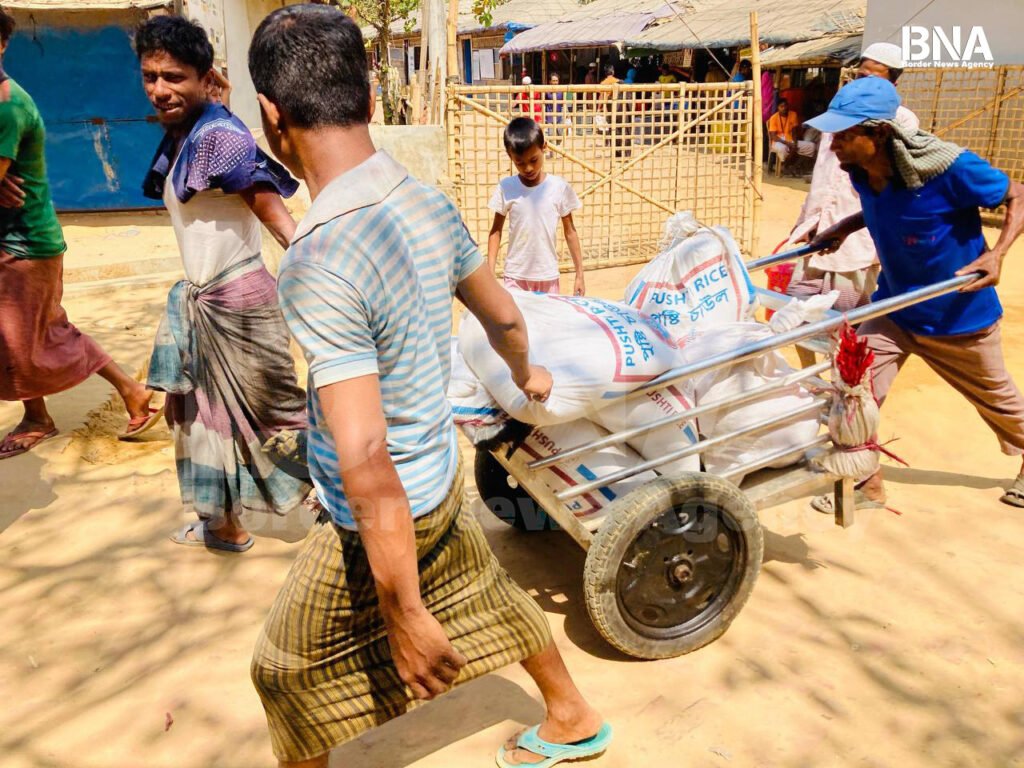
The WFP has warned that any further cuts would fall below the minimum survival level and fail to meet even basic dietary needs. If urgent funding is not secured, the situation could escalate into a full-blown humanitarian catastrophe, with mass starvation and disease outbreaks.
Filippo Grandi, the U.N. High Commissioner for Refugees, recently stated during his visit to Cox’s Bazar:
“If donor support to the camps decreases dramatically which may happen – the huge work done by the Bangladesh government, aid agencies, and refugees will be impacted, putting thousands at risk of hunger, disease, and insecurity.”
Bangladeshi officials have expressed grave concerns over the impact of these cuts, warning that they could lead to widespread suffering and social unrest. Rahman, the top official overseeing the camps, stressed:
“These people are stateless, ill-fated, and should not be suffering due to the funding crunch.”
What’s Next? The Urgent Need for Action
As the clock ticks towards April 1, the WFP and other humanitarian organizations are in a race against time to secure additional funding and prevent further catastrophe. However, with donor fatigue growing and geopolitical priorities shifting, securing the required funds remains an uphill battle.
The following urgent actions are needed to prevent further suffering:
- Immediate Financial Support: The international community, especially major donors like the U.S., EU, and Gulf countries, must step up and bridge the funding gap.
- Long-Term Sustainability Plans: Efforts should focus on creating sustainable food solutions, including agricultural projects within the camps.
- Political Solutions: The root cause of the crisis Myanmar’s refusal to repatriate the Rohingya—must be addressed to prevent indefinite reliance on aid.
- Increased Advocacy: Media, human rights groups, and international organizations must continue highlighting the plight of the Rohingya to keep global attention on their crisis.
The fate of one million people now hangs in the balance. Will the world let them starve, or will it step up to prevent an avoidable tragedy?
An elderly woman from Camp 7, sitting under the shade of a makeshift shelter, shared her deep worries: “We’ve already seen our children grow thinner and weaker, and now this reduction what will become of them?” Her hands trembled as she spoke, clutching the only piece of cloth she had left. “I don’t know how I can keep going, or how I can keep them alive.”
Her sentiments echo the growing concern within the camps as more families brace for the future. A young father from the same camp expressed his despair: “I’ve been living here for years, and each day feels harder. My children are always hungry, but now I wonder if I’ll even be able to give them one meal a day with the new cuts.”
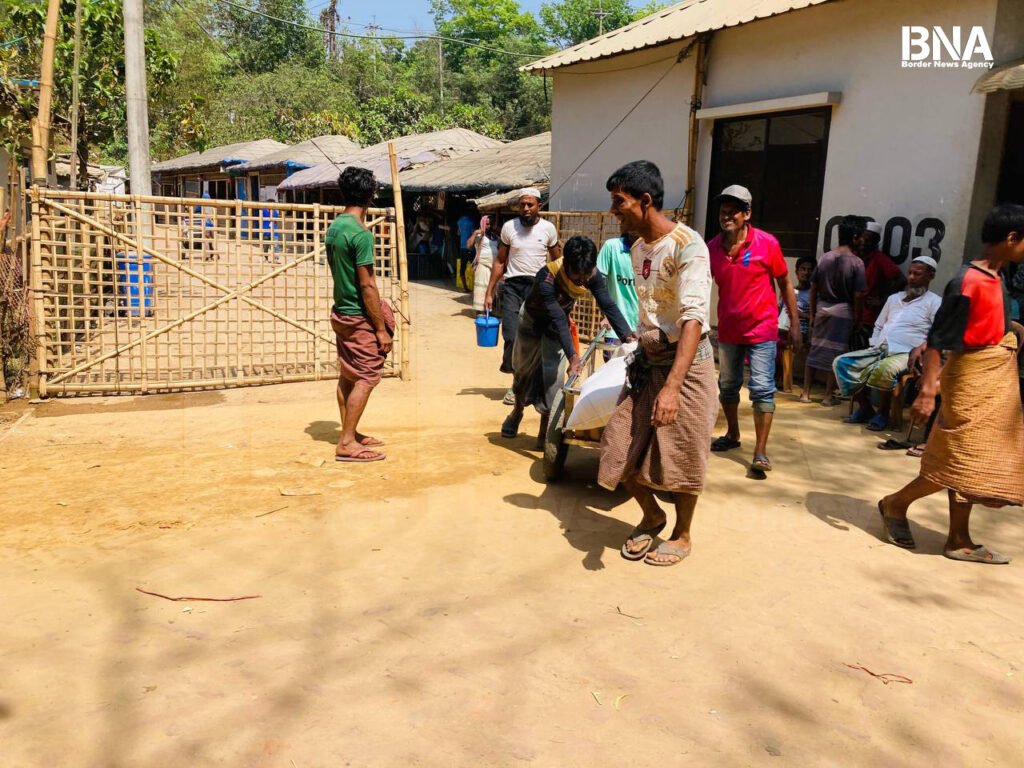
His voice was steady, but there was a palpable sadness in his eyes as he spoke about his children’s prospects in the coming months.
Local aid workers, who have been tirelessly working to assist the refugees, are also feeling the weight of this decision. One of them, who has worked in the camps for over five years, explained: “We’ve seen firsthand the impact of food insecurity. The last ration cut left children begging for food in the streets. I’m afraid that the worst is yet to come if this cut is implemented.”
The reduced food rations are not just a statistic they are a looming tragedy for those who have already lost so much. Health experts predict that the reduction will exacerbate malnutrition rates, particularly among pregnant women, the elderly, and children, who are already struggling to survive with insufficient nutrition.
As more children fall ill from hunger, it’s becoming clear that the future of an entire generation is at risk.
A community leader in Camp 7, who has witnessed the resilience of the refugees over the years, said: “We are fighting not only for food, but for the dignity to survive with some hope. How much longer can we endure? The children, the elderly they deserve better.”
With limited opportunities to generate income and no access to formal education or healthcare, the refugees are left with few options. As the situation grows more desperate, there is a rising fear that this new phase will lead to further instability within the camps, as people struggle to meet their basic needs.
The U.N. and other international organizations face a critical challenge in trying to prevent this crisis from spiraling out of control. As aid efforts falter, one thing is clear: the Rohingya refugees, having endured so much, are now faced with an even more uncertain and perilous future.
If this funding crisis is not addressed quickly, the world will be witnessing the collapse of a humanitarian effort that has already been struggling to meet the needs of one of the most vulnerable populations on earth. The cuts in food aid are not just a temporary setback they are a turning point that could lead to irreversible harm unless immediate action is taken.
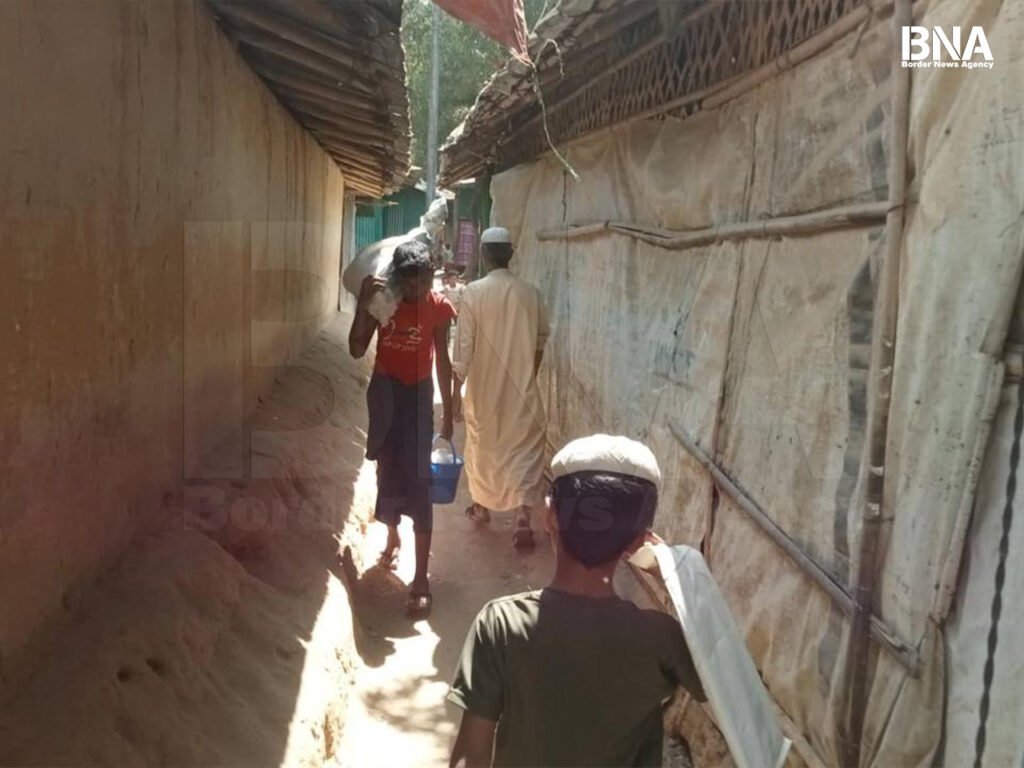
Rohingya refugees are not just victims of a natural disaster they are victims of political indifference and a lack of global accountability. As one refugee said, “We fled from violence in Myanmar, but now we face a slow death here, in this camp, because the world turned its back on us.”
As the situation becomes more dire in the refugee camps, a sense of growing frustration and hopelessness spreads through the Rohingya community. Many, like a young mother from Camp 12, are asking themselves: “How long will this continue? First, we fled Myanmar, and now, here in Bangladesh, it feels like we’re being punished again slowly starved and left to fend for ourselves.”
The Rohingya refugees had hoped that, by escaping the violence and persecution in Myanmar, they would find peace and security in Bangladesh. However, with the United Nations cutting food rations year after year, that hope is beginning to fade.
The reductions, which seem to happen with increasing regularity, are slowly suffocating the refugees’ ability to survive. It’s a reality many can no longer ignore life is becoming unsustainable.
One of the main issues the Rohingya face is the lack of a permanent solution.
Despite the Bangladesh government’s best efforts, the refugees remain stateless and without prospects. The Myanmar government’s refusal to accept their return, despite repeated promises and negotiations, has left the refugees in a limbo trapped between a hostile past and an uncertain future. The Rohingya remain caught in this web of inaction, with their pleas for safety and recognition falling on deaf ears.
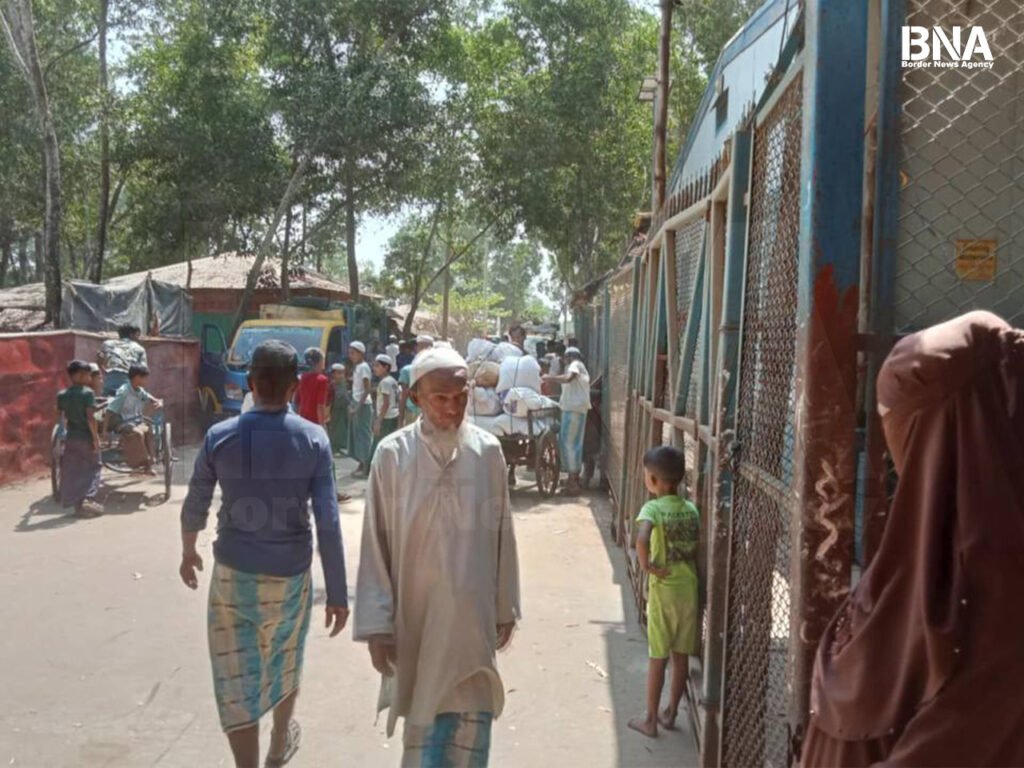
An elder from Camp 6, whose family has been in Bangladesh for over a decade, summed up the situation: “It’s like we are stuck. We can’t go back to Myanmar, and no one seems to care what happens to us here. They keep reducing our food, and our children grow weaker each day. What future do we have?”
The ongoing conflict in Myanmar, particularly the growing tension between the Myanmar military and the Arakan Army (AA), has added to the already complex situation. The AA, a local armed group from the Rakhine State, has been fighting for greater autonomy and rights for the Rakhine and Rohingya communities, but their activities have further complicated any hope for peace and reconciliation in the region.
The Arakan Army’s presence and the Myanmar military’s counterattacks have led to more displacement and insecurity in Rakhine, leaving the Rohingya in an even more vulnerable position. The violence has made it even harder for Rohingya refugees to consider returning to Myanmar, as the situation grows more unstable with each passing day.
“Even if we could go back, how can we when we’re caught between two forces fighting each other? The military and the Arakan Army. It’s chaos,” said a refugee from Camp 8, who once hoped to return to his home village in Myanmar.
“Every year, they reduce our food, but we are already so hungry. The world doesn’t understand what we’re facing, not just from the military but from the instability caused by these fighting groups.”
With the ongoing conflicts and no clear path for repatriation, the Rohingya refugees are left in a precarious situation. They continue to endure the physical and psychological toll of displacement, facing not only the ongoing cuts in humanitarian aid but also the lingering fear that, even if they were to return, their safety would be uncertain in a region torn apart by violence.
A community leader from Camp 5 spoke about the increasing tensions among refugees, saying, “People are desperate. There’s not enough food, and there’s no work. Every year, the aid gets smaller, and we’re told to wait, to hope that things will improve. But how can we keep waiting when we are starving?”
The cuts in food assistance only add to the already overwhelming burden of the Rohingya. As the food supply decreases, families are forced to make difficult choices sacrificing their health and wellbeing for survival.
Children are going hungry, elderly people are growing weaker, and young people are becoming increasingly disillusioned with the system that has failed them.
With no resolution in sight, the Rohingya community remains in a constant state of vulnerability, caught in an endless cycle of poverty and deprivation. Each year, the cuts grow more severe, while the promise of a better future grows more distant.
The world watches, but so far, the international community has failed to offer a solution that ensures a brighter tomorrow for the Rohingya.
The situation in the refugee camps is not just a humanitarian issue it is a human rights crisis, one that demands immediate attention and action. As one refugee leader put it, “If the world continues to turn a blind eye, we fear the day when our children, who already struggle to survive, will lose everything.”
if surviving in overcrowded camps with limited access to basic necessities wasn’t difficult enough, the severe cuts to food assistance are compounded by another devastating issue: the almost nonexistent job opportunities within the camps. Refugees, many of whom once had livelihoods in Myanmar, now find themselves trapped in a dire situation with little hope of earning enough money to support their families.
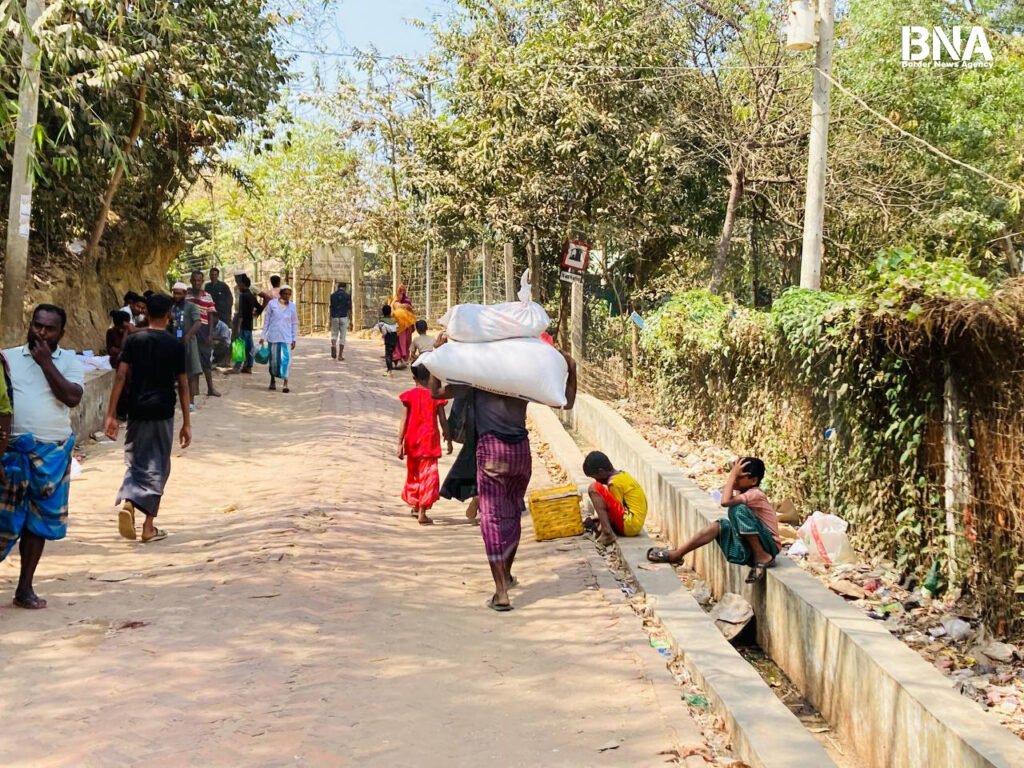
With almost no chance to work or build any means of self-sufficiency, the burden of survival becomes even heavier.
The new cuts to food aid will leave refugees with only 700 Bangladeshi Taka (around $6) per month. This sum is simply not enough to meet the needs of an entire family, especially when food and basic necessities are already scarce. To survive on just 700 Taka for the entire month is unimaginable. In the overcrowded camps, where food is limited and families are growing, the situation is nothing short of a crisis.
A refugee from Camp 12 said, “How can we survive with only 700 Taka a month? The little we get isn’t even enough to buy food for one week, let alone the whole month. We don’t have jobs here, no way to earn money. We can’t buy anything to survive. It’s a nightmare.”
The lack of jobs in the camps means that refugees have few options for making money. While some may attempt to do small jobs or sell items, the opportunities are rare, and those who do manage to earn a little often find their income to be far too low to meet their needs. Most refugees are unable to work legally, and with limited skills or resources, there is little they can do to change their situation. The camp environment is restrictive, and any chance for personal development is often blocked by bureaucratic and logistical barriers.
Another refugee from Camp 7 pointed out, “There are no jobs here. Most of us are just waiting for the food aid to arrive each month. When it doesn’t come or gets cut, we don’t know how to survive. With 700 Taka, we can’t even feed ourselves properly. It’s hard to even imagine how we can make it through the month.”
This lack of employment options only amplifies the unfairness of the situation. How can a family survive when there is no work and no way to earn money, and they are left with just 700 Taka for an entire month? The refugees are in a catch-22 unable to work, unable to make a living, and now struggling to survive on the little aid they receive.
The conditions are getting worse with each passing month, as cuts to food aid continue to shrink the already limited resources. The overwhelming sense of helplessness in the camps is palpable as people grow desperate for a solution. Without sufficient aid or access to work, the cycle of poverty deepens, and many refugees are left wondering how much longer they can hold on.
In a camp where survival is already a daily struggle, the combination of food aid cuts and the lack of job opportunities creates an unbearable situation. With just 700 Taka to survive the entire month, families are left with no choice but to make impossible decisions, all while living in constant fear that the next cut will leave them with even less.
Imagine trying to survive on BDT 1,508 for an entire month. Now, picture that amount being slashed to just BDT 724.
How would you survive in the world’s largest refugee camp?
The reality for Rohingya refugees in Bangladesh is just that: an overwhelming struggle to make ends meet with a fraction of what is needed for survival. Once, BDT 1,508 was barely enough to cover the bare essentials like food, water, and hygiene supplies. But now, with the latest cuts in food aid, refugees are left to face a harsh and unforgiving reality. BDT 724 for an entire month is insufficient for even the most basic needs.
It’s impossible to cover the cost of essential items like medicine, transportation, and other necessities with such a meager amount. Families that were already living on the edge are now pushed deeper into poverty and desperation. It’s heartbreaking to think that people who fled violence and persecution in Myanmar, hoping for a chance to rebuild their lives, are now facing an even more uncertain future, with fewer resources and little hope of improvement.
How can you feed your children, keep them healthy, and ensure their safety when there’s no income, no job opportunities, and very limited aid? This is the cruel dilemma many refugees are now grappling with.
The cut to BDT 724 per month is more than just an economic hardship it’s a direct threat to their very survival. Families are already experiencing the consequences of this reduction, with rising hunger, malnutrition, and disease taking hold in the camps.
When faced with such an impossible situation, refugees are left asking: How do we survive with so little? The world’s largest refugee camp, which houses over a million people, is now in the midst of a crisis that requires urgent attention.
